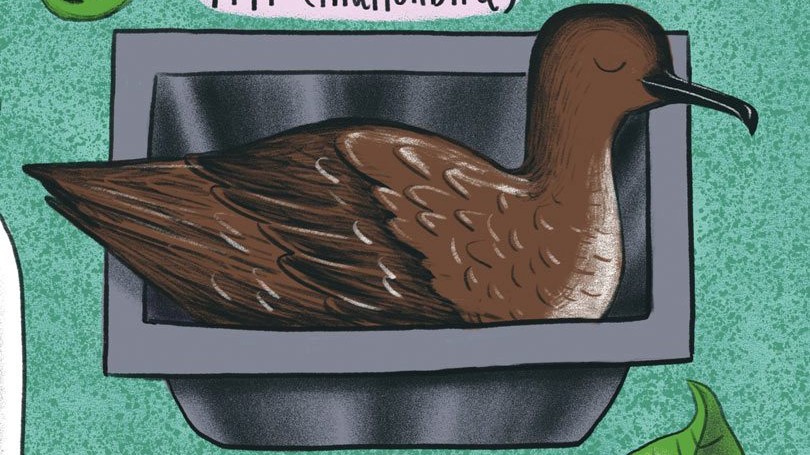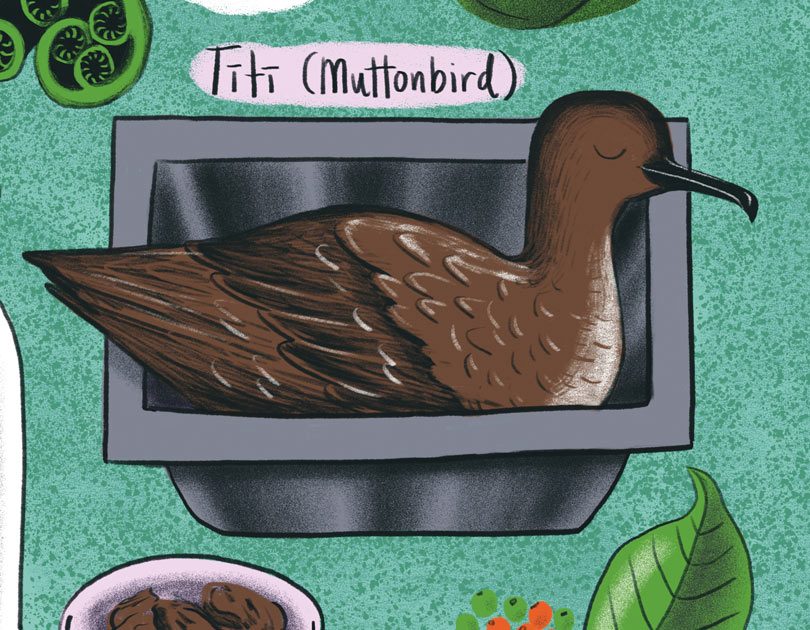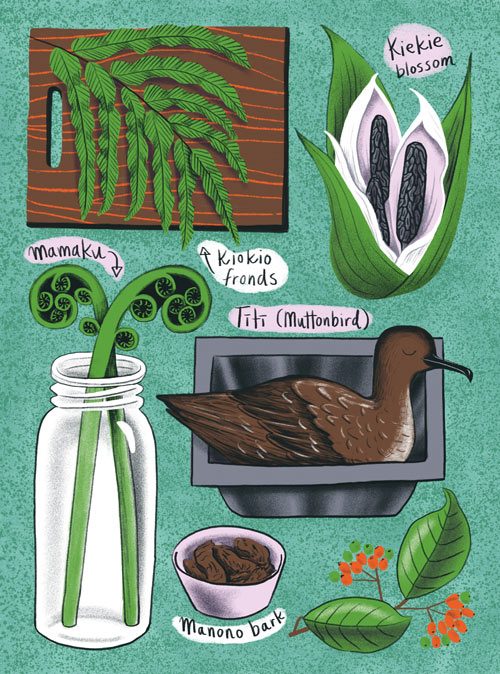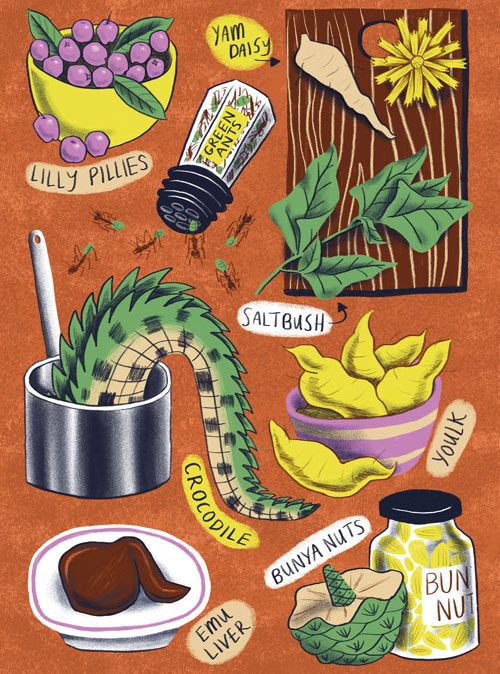EMBRACING OUR FOOD HERITAGE OR CULTURAL APPROPRIATION? WESTERN AUSTRALIAN FOOD WRITER MAX BREARLEY EXAMINES THE ISSUES AROUND PUTTING INDIGENOUS INGREDIENTS ON THE MENU.
While it may feel that we’re at a moment in food, both in New Zealand and Australia, where we broadly embrace and acknowledge indigenous ingredients and the cultures that have nurtured their use, we are in fact only in the first footsteps of the journey – but there is a path to be trodden.
Speaking to Ben Shewry of Melbourne’s Attica, I pose the question as to whether there’s a juxtaposition in Australia between a tension and disregard to Aboriginal culture in everyday life, with a seemingly high regard within the restaurant and wider food space for indigenous ingredients. Shewry is unflinching in his assessment, “I don’t think we’re celebrating it in the food scene,” he says. “I think we’re flirting around the edges with it. I think it’s pretty tokenistic actually.”
Shewry is no ordinary chef. Originally from New Zealand’s North Island, he settled in Melbourne in 2002 and is now a figure on the world stage. Attica rates as number 20 in the prestigious World’s 50 Best Restaurants list: his words carry weight. He ties together perfectly a lot of thoughts around the use of indigenous ingredients, here and globally. “You celebrate culture and you love culture, you want to learn about people, then you know you can’t separate the ingredients from the people.”
While you may see indigenous Australian ingredients on menus, Shewry doubts whether many chefs using them are genuinely engaged in Aboriginal communities, or have tried to find out more about ingredients from the people whose cultures carried knowledge of them. “It is,” says Shewry, “shallow to me, to use indigenous ingredients and not acknowledge and engage with Aboriginal people or Torres Strait Islanders; you just can’t take the food without the people, wherever you are.”
For some, Shewry’s comments may seem like a blow; to others, perhaps, a rallying cry and a roadmap as to how to do things better. Shewry draws on his upbringing, saying, “That’s probably why I have a strong appreciation for ancient Australian culture, that of Aboriginal and Torres Strait Islander people, because of the way that I was brought up, because of the way that Māori culture was celebrated in the area that I grew up in and how it was a part of everyday life.”
In Shewry’s early career he says that Māori culture in the restaurant scene had been forgotten, but that he’s now encouraged. “Many Māori chefs [are] working in New Zealand now and using their own culture as their inspiration. When I lived there no one was really taking it on board; it was just more of an everyday life thing, rather than a chef or restaurant thing.”
Prominent in this movement of chefs is Monique Fiso, of Wellingtonbased Hiakai. She echoes the words of Shewry saying, “I think New Zealand is definitely further ahead than Australia; the whole relationship between Māori and Pākehā [a Māorilanguage term for New Zealanders of European descent] is in calmer waters and there’s been a huge push in New Zealand, particularly in the past 10 years, to actually embrace Māori culture which has really helped.”
But is there the same cultural appropriation without acknowledgement? Fiso is tactful, but pointed. “There are people riding off the back of it,” she says. “You know, they’ll use a Māori ingredient, throw some of the words around, but they’ve no idea what those things mean. They’ve gone and collected ingredients in a way that goes against Māori customs.”
At Hiakai, Fiso says they’re careful about what and how they collect ingredients. “Because we know if we’re going to showcase Māori ingredients you can’t just be doing it because it looks cool on Instagram. We have to follow through with all the things that actually make it hard. So if it’s raining outside, no matter how much we need that ingredient we can’t go and pick it if it’s against custom.”
For some this runs contrary to running a business in the restaurant trade, where there’s an attitude of ‘if you need it, take it’. But for Fiso there’s cultural significance. “If we’re going to make an example of something we have to see it through,” she says. This entails planning how and when they forage based on the weather patterns. “Not because we don’t want to get rained on, but because actually there’s a great importance which is being truthful in what we’re doing; we understand the customs [many Māori ingredients can’t be collected in the rain], we understand the meaning and why we have to do things a certain way.”
The chef passionately reels off ingredients such as kiekie blossoms, that grow just once a year, with an aroma of vanilla and a taste that Fiso likens to pear; infused into gin and made into syrup they’re used on the dessert menu. Mamaku is used throughout the Hiakai menu, and Fiso says she loves using it roasted but also turning it into a fruit jelly. There’s manono bark which is akin to turmeric, and kiokio fronds of which Fiso says, “We tasted them raw and they’re not particularly delicious. We thought ‘We won’t use them again,’ but adding them to water you get this incredible porcini flavour.”
Fresh muttonbird stars on the menu but not the salted nightmare of many a childhood. “When they’re fresh that fat is just knock-out,” says Fiso. “Luckily for us we’re able to get them fresh.” The result is muttonbird as it should taste. A fresh bird is a revelation to diners making them think, “Oh my gosh, this is why people like it,” she says, laughing.
Fiso is clear on her job beyond creating delicious dishes. “It’s to show you that there’s a lot of versatility in these ingredients and we’re underutilising them. The Brits came over and brought easy-to-grow vegetables, but now we’re trying to bring back some of the other stuff to showcase New Zealand in a different more unique light.”
Shewry has a wide web of supply that stretches throughout Australia, with indigenous and non-indigenous suppliers; he also has a garden at Rippon Lea Estate near to Attica where he grows ingredients such as bunya nuts and lilly pillies.
“Hundreds of indigenous ingredients come through the kitchen every year,” he says. “Many things that people don’t even consider to be indigenous like fish or shellfish for example, all endemic to this country. Then we go deeper into the massive array of fruits that we have – spices, leaves, plants, vegetables and so many different things – we’re working a lot with grains and we really want to get to the point where we don’t need nonnative grains. But it’s a long way off.”
At Attica he works with a host of native proteins, from kangaroo to crocodile and emu liver; they use both black and green ants, native sugarbag honey and murnong or yam daisy, an important staple for the Bunurong people.
While Fiso has Māori heritage and continues to learn, Shewry, as a Pākehā and as a migrant to Australia, builds his knowledge and his connection in a way that allows acknowledgement. “We recently took a research trip up north to see a friend up there, Noel Butler. He’s an indigenous chef, horticulturalist and an expert on his own culture and his own food.” Shewry talks of the inspiration of the journey saying, “Noel cooked a simple and delicious meal of local shellfish the traditional way over fire. I acknowledge that experience, that inspiration and create something here based around it, telling his amazing story.”
Time on country is a practice that many chefs working in this arena don’t undertake, but for Paul Iskov of Fervor, a Western Australian culinary pop up, it’s essential to his mission. I’ve dined with Iskov across the state, but perhaps the image that sticks in the mind is the chef cooking up at a Noongar Farm Field Day – an initiative for sharing information between indigenous farmers, scientists and Noongar groups looking to get involved in the cultivation of native ingredients like youlk, a native tuber. On a farm in the vast Great Southern region, Iskov cooked up a more rustic version of his fine-dining fare: yonga (kangaroo) tail broth and fresh damper with wooden platters of crisp saltbush. It’s all typically Fervor: of the place and delicious.
Iskov has worked his way around the globe in many of the restaurants that have native food at their heart, including D.O.M. in São Paulo and Noma in Copenhagen. He had early struggles in finding connection and acceptance but over the years, through effort and respect, he’s built trust. He believes there’s an opportunity for Australia to have an incredible cuisine utilising a lot of these native ingredients.“But if it’s not done in a respectful way, in a positive way from the start, it’s really damaging,” he says.
For Fiso there’s power in what she’s doing and the experience that her diners have. At Hiakai she lays the raw ingredients out next to the presented dish and explains the context. “You walk away and you hear them talking about it, memories of growing up in New Zealand and now this delicious dish in their adulthood,” she says. “It’s cool to be at the forefront and making not discoveries but rediscoveries and being able to turn it into something just of this time.”
SEE MORE FROM CUISINE
Try It… You’ll Like It Issue 231
Good things take time and, 27 years after the original tamarind…
Design File / Sam Griffin / Creative Director of CTRL Space / Auckland
I’ll need to come back in 50 years to talk again to Sam Griffin,…








